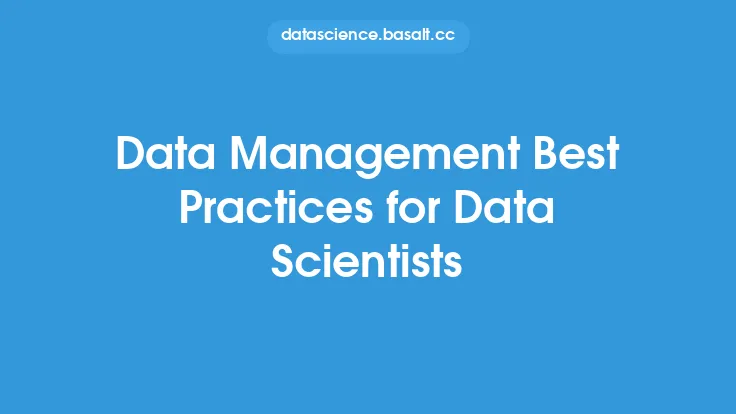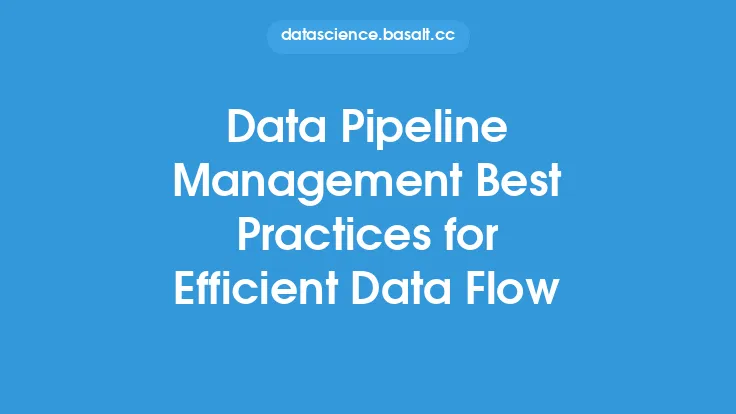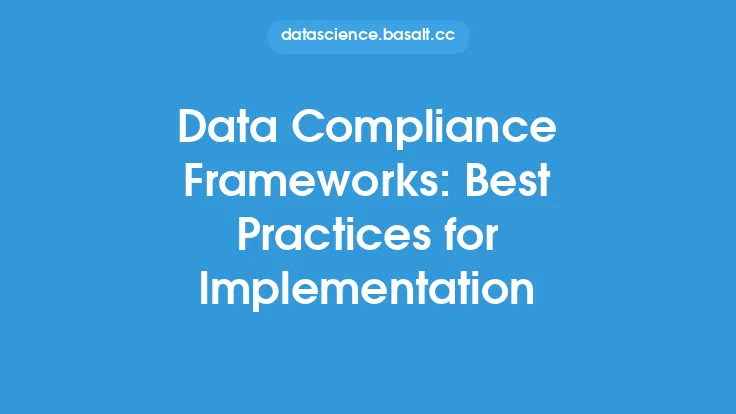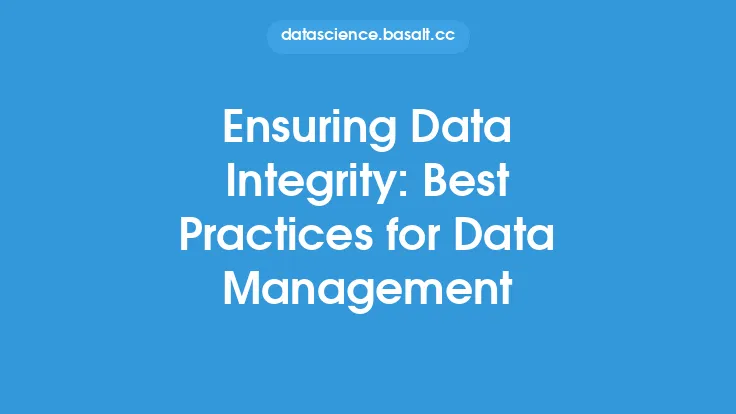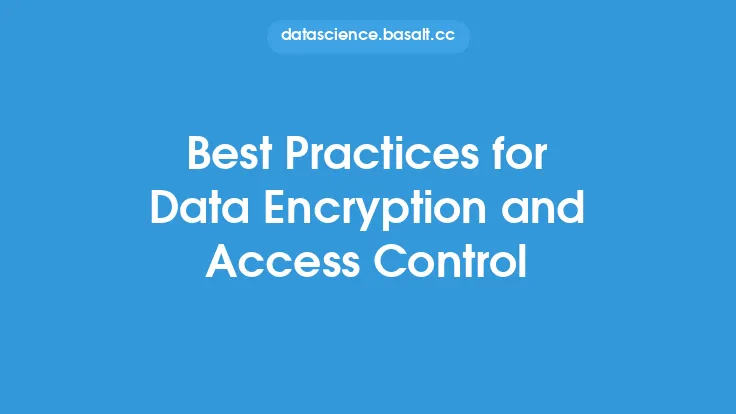Effective data management is crucial for organizations to make informed decisions, improve operational efficiency, and maintain a competitive edge. A well-structured data policy framework is essential to ensure that data is managed, stored, and utilized in a way that aligns with the organization's goals and objectives. In this article, we will delve into the best practices for creating and implementing a robust data policy framework, which is a critical component of data governance.
Introduction to Data Policy Frameworks
A data policy framework is a set of guidelines, rules, and procedures that outline how an organization collects, stores, processes, and disseminates data. It provides a structured approach to data management, ensuring that data is accurate, complete, and secure. A well-designed data policy framework helps organizations to mitigate risks associated with data breaches, non-compliance, and data quality issues. It also enables organizations to leverage their data assets to drive business growth, improve customer experience, and gain a competitive advantage.
Key Components of a Data Policy Framework
A comprehensive data policy framework consists of several key components, including:
- Data Governance Structure: Defines the roles and responsibilities of various stakeholders, including data owners, stewards, and users.
- Data Classification: Categorizes data based on its sensitivity, criticality, and business value.
- Data Security: Outlines the measures to protect data from unauthorized access, theft, or damage.
- Data Quality: Establishes standards for data accuracy, completeness, and consistency.
- Data Retention and Disposal: Specifies the policies for storing, archiving, and deleting data.
- Compliance and Regulatory Requirements: Ensures adherence to relevant laws, regulations, and industry standards.
- Data Access and Authorization: Defines the procedures for granting and revoking access to data.
- Data Monitoring and Auditing: Establishes processes for tracking data usage, detecting anomalies, and conducting audits.
Best Practices for Implementing a Data Policy Framework
To ensure the effective implementation of a data policy framework, organizations should follow these best practices:
- Establish Clear Goals and Objectives: Align the data policy framework with the organization's overall strategy and objectives.
- Conduct a Thorough Data Inventory: Identify and categorize all data assets, including structured and unstructured data.
- Develop a Data Governance Structure: Define roles and responsibilities, and establish a data governance council to oversee data management.
- Implement Data Security Measures: Use encryption, access controls, and other security measures to protect sensitive data.
- Establish Data Quality Standards: Develop procedures for data validation, data cleansing, and data normalization.
- Provide Training and Awareness: Educate employees on data policy and procedures, and ensure that they understand their roles and responsibilities.
- Monitor and Review: Regularly review and update the data policy framework to ensure it remains relevant and effective.
Technical Considerations for Data Policy Frameworks
From a technical perspective, organizations should consider the following when implementing a data policy framework:
- Data Storage and Management: Use scalable and secure data storage solutions, such as cloud-based storage or on-premises data centers.
- Data Integration and Interoperability: Ensure that data can be easily integrated and shared across different systems and applications.
- Data Encryption and Access Control: Implement robust encryption and access control measures to protect sensitive data.
- Data Analytics and Reporting: Use data analytics and reporting tools to provide insights and visibility into data usage and quality.
- Cloud and Hybrid Environments: Consider the unique challenges and opportunities of cloud and hybrid environments, and develop strategies to address them.
Challenges and Opportunities in Implementing Data Policy Frameworks
Organizations may face several challenges when implementing a data policy framework, including:
- Resistance to Change: Employees may resist changes to existing data management practices.
- Limited Resources: Implementing a data policy framework may require significant resources, including time, money, and personnel.
- Complexity: Data policy frameworks can be complex and difficult to manage, especially in large and distributed organizations.
- Evolving Regulatory Requirements: Organizations must stay up-to-date with changing regulatory requirements and industry standards.
Despite these challenges, a well-designed data policy framework can provide numerous opportunities, including:
- Improved Data Quality: A data policy framework can help ensure that data is accurate, complete, and consistent.
- Increased Efficiency: A data policy framework can streamline data management processes, reducing costs and improving productivity.
- Enhanced Security: A data policy framework can help protect sensitive data from unauthorized access, theft, or damage.
- Better Decision-Making: A data policy framework can provide insights and visibility into data usage and quality, enabling better decision-making.
Conclusion
A well-structured data policy framework is essential for effective data management, and is a critical component of data governance. By following best practices, considering technical requirements, and addressing challenges and opportunities, organizations can create a robust data policy framework that aligns with their goals and objectives. A data policy framework can help organizations mitigate risks, improve data quality, and leverage their data assets to drive business growth and gain a competitive advantage.
